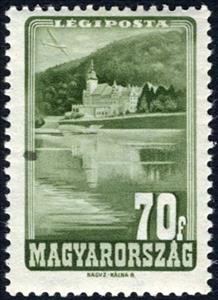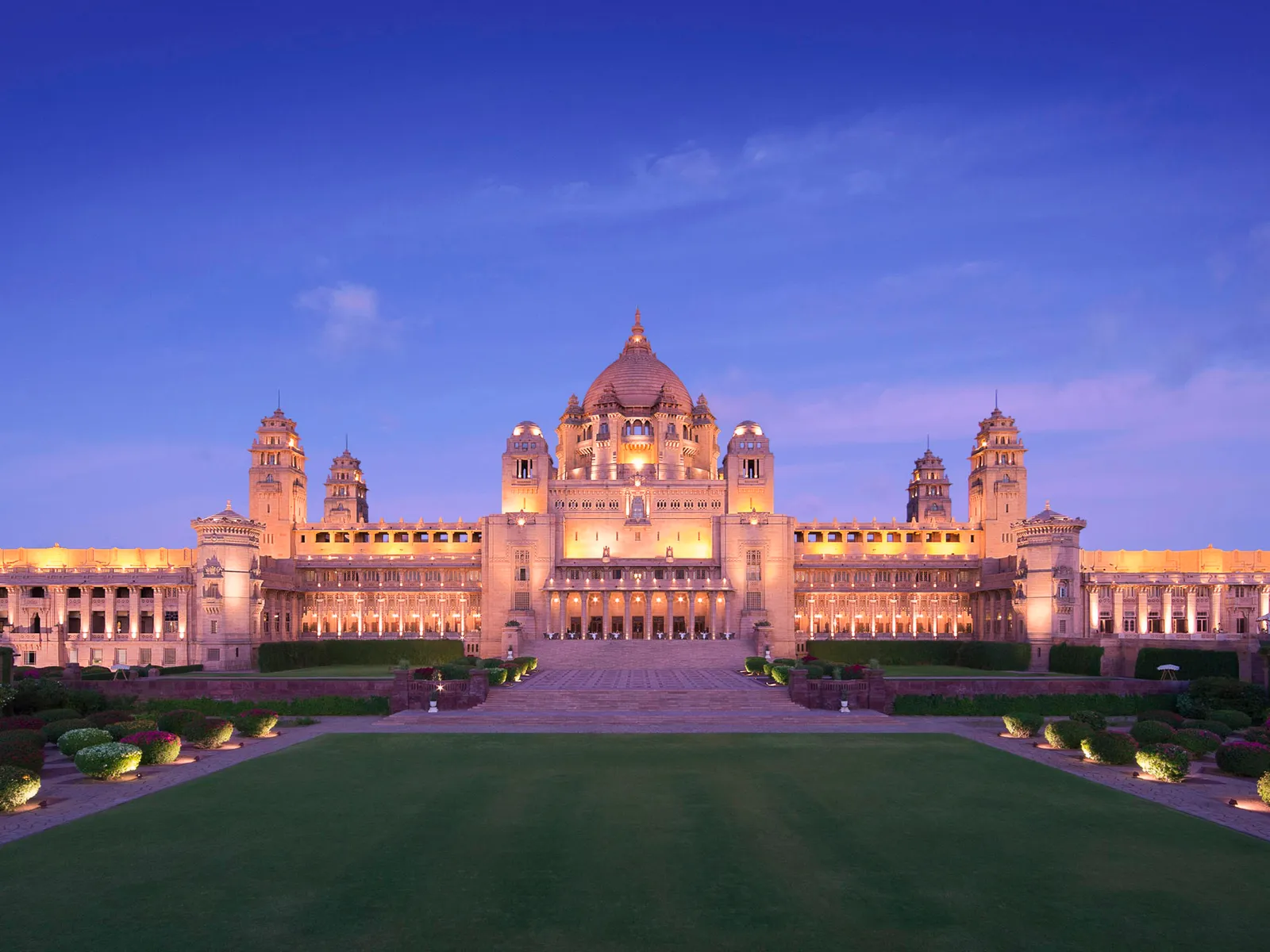Stamp: Palace Hotel, Lillafüred (Hungary 1947)
Palace Hotel, Lillafüred (Hungary 1947)
05 March (Hungary ) within release Places of Interest goes into circulation Stamp Palace Hotel, Lillafüred face value 70 Hungarian fillér
| Stamp Palace Hotel, Lillafüred in catalogues | |
|---|---|
| Philatelia Hungarica Catalog: | PHu: HU 1012A/B2 |
Stamp is vertical format.
Also in the issue Places of Interest:
- Stamp - Falcone (Racing Yacht) on Lake Balaton face value 3;
- Stamp - Basilica, Esztergom face value 20;
- Stamp - Basilica, Esztergom face value 20;
- Stamp - Basilica, Esztergom face value 20;
- Stamp - Basilica, Esztergom face value 20;
- Stamp - Basilica, Esztergom face value 20;
- Stamp - Basilica, Esztergom face value 20;
- Stamp - Basilica, Esztergom face value 20;
- Stamp - Basilica, Esztergom face value 20;
- Stamp - Falcone (Racing Yacht) on Lake Balaton face value 3;
- Stamp - Falcone (Racing Yacht) on Lake Balaton face value 3;
- Stamp - Falcone (Racing Yacht) on Lake Balaton face value 3;
- Stamp - Falcone (Racing Yacht) on Lake Balaton face value 3;
- Stamp - Falcone (Racing Yacht) on Lake Balaton face value 3;
- Stamp - Falcone (Racing Yacht) on Lake Balaton face value 3;
- Stamp - Falcone (Racing Yacht) on Lake Balaton face value 3;
- Stamp - Falcone (Racing Yacht) on Lake Balaton face value 3;
- Stamp - Falcone (Racing Yacht) on Lake Balaton face value 3;
- Stamp - Falcone (Racing Yacht) on Lake Balaton face value 3;
- Stamp - Falcone (Racing Yacht) on Lake Balaton face value 3;
- Stamp - Falcone (Racing Yacht) on Lake Balaton face value 3;
- Stamp - Falcone (Racing Yacht) on Lake Balaton face value 3;
- Stamp - Falcone (Racing Yacht) on Lake Balaton face value 3;
- Stamp - Liberty Bridge, Budapest face value 50;
- Stamp - Liberty Bridge, Budapest face value 50;
- Stamp - Liberty Bridge, Budapest face value 50;
- Stamp - Liberty Bridge, Budapest face value 50;
- Stamp - Liberty Bridge, Budapest face value 50;
- Stamp - Liberty Bridge, Budapest face value 50;
- Stamp - Liberty Bridge, Budapest face value 50;
- Stamp - Loyalty Tower, Sopron face value 10;
- Stamp - Loyalty Tower, Sopron face value 10;
- Stamp - Loyalty Tower, Sopron face value 10;
- Stamp - Palace Hotel, Lillafüred face value 70;
- Stamp - Palace Hotel, Lillafüred face value 70;
- Stamp - Palace Hotel, Lillafüred face value 70;
- Stamp - Palace Hotel, Lillafüred face value 70;
- Stamp - Palace Hotel, Lillafüred face value 70;
- Stamp - Palace Hotel, Lillafüred face value 70;
- Stamp - Palace Hotel, Lillafüred face value 70;
- Stamp - Palace Hotel, Lillafüred face value 70;
- Stamp - Palace Hotel, Lillafüred face value 70;
- Stamp - Palace Hotel, Lillafüred face value 70;
- Stamp - Palace Hotel, Lillafüred face value 70;
- Stamp - Parliament Building, Budapest face value 5;
- Stamp - Parliament Building, Budapest face value 5;
- Stamp - Parliament Building, Budapest face value 5;
- Stamp - Parliament Building, Budapest face value 5;
- Stamp - Parliament Building, Budapest face value 5;
- Stamp - Parliament Building, Budapest face value 5;
- Stamp - Solomon's Tower, Visegrád face value 1.40;
- Stamp - Solomon's Tower, Visegrád face value 1.40;
- Stamp - Solomon's Tower, Visegrád face value 1.40;
- Stamp - Solomon's Tower, Visegrád face value 1.40;
- Stamp - Solomon's Tower, Visegrád face value 1.40;
- Stamp - Vajdahunyad Castle, Budapest face value 1;
- Stamp - Vajdahunyad Castle, Budapest face value 1;
- Stamp - Vajdahunyad Castle, Budapest face value 1;
Stamp Palace Hotel, Lillafüred it reflects the thematic directions:
An aircraft (pl. aircraft) is a vehicle that is able to fly by gaining support from the air. It counters the force of gravity by using either static lift or the dynamic lift of an airfoil, or, in a few cases, direct downward thrust from its engines. Common examples of aircraft include airplanes, rotorcraft (including helicopters), airships (including blimps), gliders, paramotors, and hot air balloons.Part 1 (Definitions and Abbreviations) of Subchapter A of Chapter I of Title 14 of the U. S. Code of Federal Regulations states that aircraft "means a device that is used or intended to be used for flight in the air."
Aviation is the practical aspect or art of aeronautics, being the design, development, production, operation and use of aircraft, especially heavier than air aircraft. The word aviation was coined by French writer and former naval officer Gabriel La Landelle in 1863, from the verb avier (synonymous flying), itself derived from the Latin word avis ("bird") and the suffix -ation.
A building or edifice is a structure with a roof and walls standing more or less permanently in one place, such as a house or factory. Buildings come in a variety of sizes, shapes and functions, and have been adapted throughout history for a wide number of factors, from building materials available, to weather conditions, to land prices, ground conditions, specific uses and aesthetic reasons. Buildings serve several needs of society – primarily as shelter from weather, security, living space, privacy, to store belongings, and to comfortably live and work. A building as a shelter represents a physical division of the human habitat (a place of comfort and safety) and the outside (a place that at times may be harsh and harmful).
A hotel is an establishment that provides paid lodging on a short-term basis. Facilities provided inside a hotel room may range from a modest-quality mattress in a small room to large suites with bigger, higher-quality beds, a dresser, a refrigerator, and other kitchen facilities, upholstered chairs, a flat-screen television, and en-suite bathrooms. Small, lower-priced hotels may offer only the most basic guest services and facilities. Larger, higher-priced hotels may provide additional guest facilities such as a swimming pool, a business center with computers, printers, and other office equipment, childcare, conference and event facilities, tennis or basketball courts, gymnasium, restaurants, day spa, and social function services. Hotel rooms are usually numbered (or named in some smaller hotels and B&Bs) to allow guests to identify their room. Some boutique, high-end hotels have custom decorated rooms. Some hotels offer meals as part of a room and board arrangement. In Japan, capsule hotels provide a tiny room suitable only for sleeping and shared bathroom facilities.
A palace is a large residence, often serving as a royal residence or the home for a head of state or another high-ranking dignitary, such as a bishop or archbishop. The word is derived from the Latin name palātium, for Palatine Hill in Rome which housed the Imperial residences





